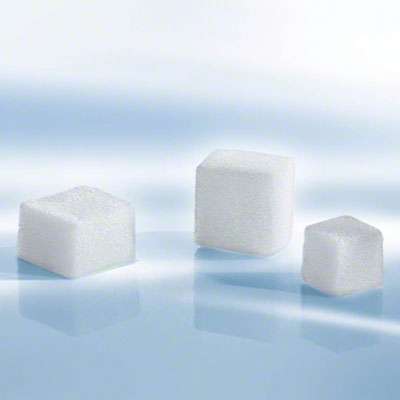

The thrombin solution was prepared by mixing the calcium chloride injection and lyophilized thrombin powder. TG dissolved in calcium chloride solution at a concentration of 10% ( w/ v) was prepared and stored on ice until use. The gelatin solution (20% w/ w) in PBS buffer (pH=7.4) was freshly prepared each day and maintained at 40 ☌ for no more than 1 h prior to use. Normal saline was provided by the Chinese People's Liberation Army General Hospital. The calcium chloride injection was obtained from Shanghai Pharmaceutical Co, Ltd (Shanghai, China). Lyophilizing thrombin powder (500 UI) was obtained from Beijing First Biochemical Pharmaceutical Co, Ltd (Beijing, China). TG was obtained from Vickers Industrial Co, Ltd (Shanghai, China). Gelatin (180 Bloomg, type B, derived from bovine bones) was obtained from the Beijing University of Chemical Technology (National Gelatin Testing Center, Beijing, China). We conducted a randomized controlled study in a canine model of hepatic trauma to investigate the efficacy of this novel hemostatic sealant that was applied under no pressure. Additionally, TG was found to be effective in the crosslinking of gelatin 18, 24, 25, 26, and previous studies have shown that the gelatin-TG adhesive could achieve complete hemostasis in 2.5 min on liver wounds and femoral artery wounds in a murine model 27.Ī hemostatic sealant based on the in situ gel formation of gelatin catalyzed by thrombin and crosslinked by TG was investigated and discussed in this study.
#GELATIN STOP PERIOD SKIN#
It was proved to have an effect of enhancing the integrative bonding of articular cartilage wounds 21, promoting the healing of skin wounds 22, and serving in fibrin polymerization during blood clotting 23. Initial studies with TG were aimed at its applications in the food industry 18, 19, 20, and later studies laid more emphasis on its potential medical applications. Hence, to serve as a non-toxic alternative to the chemical crosslinker glutaraldehyde, the calcium-dependent transglutaminase (TG) is investigated. Slight toxicity has been demonstrated in oral toxicology studies ( eg, contact dermatitis when applied on the skin 17). However, it is noteworthy that for in situ applications, there are safety concerns associated with the employment of glutaraldehyde 16.

FloSeal has been certified to have a significant hemostatic efficacy in a range of surgical situations, including cardiac 4, vascular 5 and spinal surgeries 6, liver rupture and resection 7, 8, 9, renal injury 10, partial nephrectomy (open and laparoscopic) and percutaneous nephrolithotomy 11, 12, endoscopic sinus surgery 13 and gynecological surgery 14, 15. Topical hemostats, as a novel method, may contribute to coping with the issue of hemostasis when traditional surgical methods are ineffective or inappropriate 3.įloSeal ™, a topical agent, is a hemostatic sealant composed of thrombin and a gelatin matrix derived from bovine collagen, which is crosslinked by glutaraldehyde. Although conventional methods, such as suturing and cautery, are effective in terminating hemorrhage, limitations exist in their hepatic application due to the crisp texture and inaccessible location of the liver 2. Hemorrhage remains the leading cause of abdominal wounds 1, and thus, the quick and effective control of bleeding could greatly increase the rate of survival. Conclusion:Ĭompared with thrombin, the novel hemostatic sealant shows much better efficacy in hemostasis and may promote wound healing in dog liver trauma. Ascites were never found during 10 d follow-up in the treatment group but were observed on d 3 and d 7 in the control group. In CEUS examination, the traumatic lesions in the treatment group became significantly smaller on d 3, and disappeared on d 7, whereas the lesions in the control group still existed on d 10. The mean blood loss in the treatment group was significantly less than that in the control group (47.22☘.61 vs 79.29☑1.97 mL, P<0.05). The mean time to achieve hemostasis in the treatment group was significantly shorter than that in the control group (1.20☐.33 vs 6.70☐.64 min, P<0.05). Contrast-enhanced ultrasound (CEUS) examination was performed in each animal on d 3, d 7, and d 10 d postoperatively to study the healing of the lesions. The time to achieve hemostasis and the blood loss were measured. The traumatic lesion was topically administered the hemostatic sealant (treatment group, n=10), or a thrombin solution (control group, n=10). Hepatic trauma that mimicked the grade III–IV rupture of liver was made in 20 dogs. The aim of this study was to investigate the efficacy of the hemostatic sealant in control of bleeding caused by liver trauma in dogs. A novel hemostatic sealant based on the in situ gel formation of gelatin catalyzed by thrombin and crosslinked by transglutaminase was designed.


 0 kommentar(er)
0 kommentar(er)
